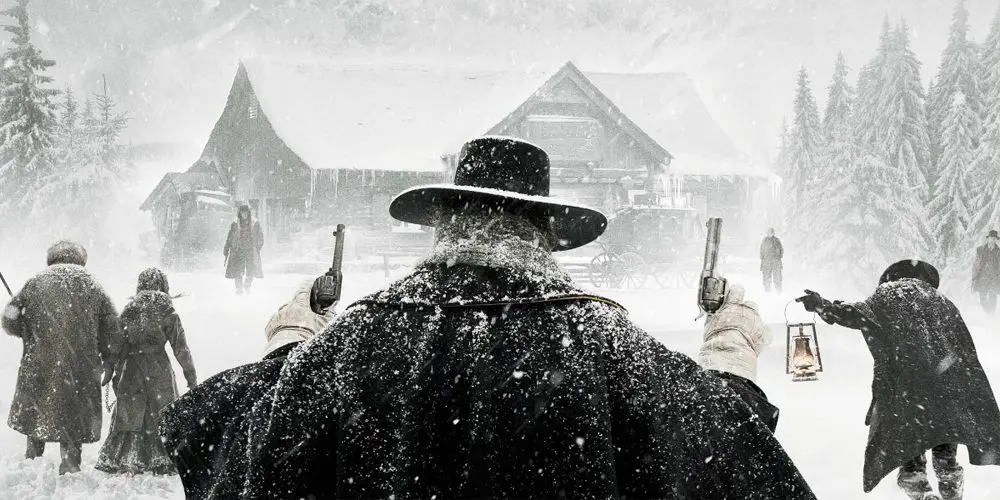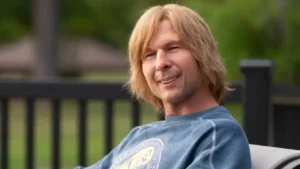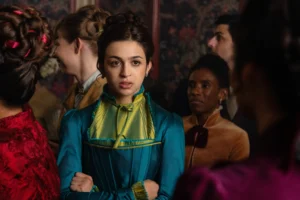It’s a Tarantino movie. Is that praise or criticism for The Hateful Eight? A warning or a recommendation? None of the above, really. It is what it is. Across seven prior features and more than two decades, writer-director Quentin Tarantino has propped his auteur style of filmmaking against so many stylistic calling cards that simply seeing his name on a poster or a trailer or on IMDb is enough.
You know what to expect, and The Hateful Eight delights in giving it to you. It’s a long, talky, blood-soaked, foul-mouthed, and mean-spirited sorta-Western whodunit set in the blustery post-Civil War Wyoming wilderness. But above all else, for better or worse, it’s a Tarantino movie.
The Hateful Eight (2015) Review and Plot Summary
There’s the familiar ensemble cast, of course. Enter first Samuel L. Jackson as Marquis Warren; a Unionist Major turned bounty hunter who carries a personal letter from Abraham Lincoln in his pocket and three lucrative corpses on his horse. Next is John Ruth (Kurt Russell), another bewhiskered bounty hunter heading to nearby Red Rock for a handsome reward – this one attached to Daisy Domergue (Jennifer Jason Leigh), a fugitive whom Ruth, known as “The Hangman”, is determined to deliver alive.
There’s a blizzard coming, one that will eventually become a character all of its own, arguably the most hateful of the bunch, so it’s all aboard the stagecoach driven by O. B. Jackson (James Parks) and to the temporary shelter of Minnie’s Haberdashery.
On the way is Chris Mannix (Walton Goggins), who claims to be the new sheriff of Red Rock. Maybe he’s lying; maybe he’s not the new sheriff-elect but a southern renegade on the run from bounties of his own. But if he’s telling the truth there’ll be no rewards in Red Rock without him, so along he comes.
Minnie’s is a stagecoach stopover cabin that seems about three times larger inside than it ought to. Still, most of the movie takes place here, so perhaps it’s just as well. Minnie herself is nowhere to be found, and neither is her husband. But a furtive Mexican, Bob (Demian Bichir, straddling a fine line between comic-strip caricature and genuinely racist parody), introduces himself as the caretaker in Minnie’s absence.
With him are a further collection of characters: General Sanford Smithers (Bruce Dern), a bitter Confederacy high-flier; Oswaldo Mobray (Tim Roth), a charmless itinerant hangman also heading to Red Rock; and a brooding, drawling cowboy named Joe Gage (Michael Madsen, essentially playing himself at this point).

Image from The Hateful Eight (Credit to The Weinstein Company)
Even though everyone seems to be heading there for one reason or another, Tarantino wisely never shows us Red Rock, instead allowing it to take on an almost mythical quality – Wyoming’s own Shangri-La or El Dorado.
The strangers snowed into Minnie’s lonely watering hole are fated to never uncover its secrets; there’s no gold, and certainly no immortality for the Hateful Eight. Red Rock’s sole reason for existing is to never quite be reached.
Then again, Tarantino’s movies have always delighted in the journey rather than the destination, and in convoluting the journey into a spaghetti junction of interconnected plot threads which feed into and build upon one another.
The Hateful Eight largely eschews the filmmaker’s trademark non-linear style of storytelling in favour of a more straightforward structure reminiscent of a stage play; set primarily in a single location, opening with an overture – a static title card accompanied by a sinuous, original Ennio Morricone score – and then divided, unapologetically, into titled chapters, some narrated by Tarantino himself and only one, the fifth, occurring out of sequence. There’s even an intermission, which seems faintly perverse in modern cinema.
But Tarantino is a scholar of film, one with a particularly antiquarian taste in how old movies were made and consumed. The Hateful Eight was shot by Tarantino’s usual cinematographer, the three-time Oscar winner Robert Richardson, with antique anamorphic lenses and was screened, in theatres which supported it, in widescreen Ultra Panavision 70mm, a format that has rarely been used since the 1960s.
Most of Mr. Tarantino’s creative hallmarks do remain, however, especially in his structure of individual scenes, with proudly amoral characters combatting each other in elaborate, run-on sentences punctuated by the occasional ludicrously violent exclamation point.
This is a cinematic language that nobody speaks quite so fluently as Tarantino, and very few other directors on earth, if any, can extend shots and scenes to the point of such absurdity without losing the audience or the point. Tarantino can, and he does, and his willingness to do so within such a formally-compelling, old-fashioned framework is what separates him from his imitators.
It is also what, in the eyes of many, makes him obnoxious as a director and his movies difficult to parse. There is a vocal subsection of Tarantino’s detractors who will insist, loudly, that he hasn’t made a decent movie since 1994’s Pulp Fiction, and that his output since then has been little more than a string of excuses to violate formal conventions in the name of self-congratulatory experimentalism and, increasingly, controversy.
2012’s Django Unchained in particular received a lot of criticism for its flagrant use of the n-word (a habit of Tarantino’s that many see an excuse for him to get away with something he otherwise couldn’t) and the apparent injection of his lopsided personal politics in representing the Confederate South as an unambiguously life-threatening tumour at the heart of American history.
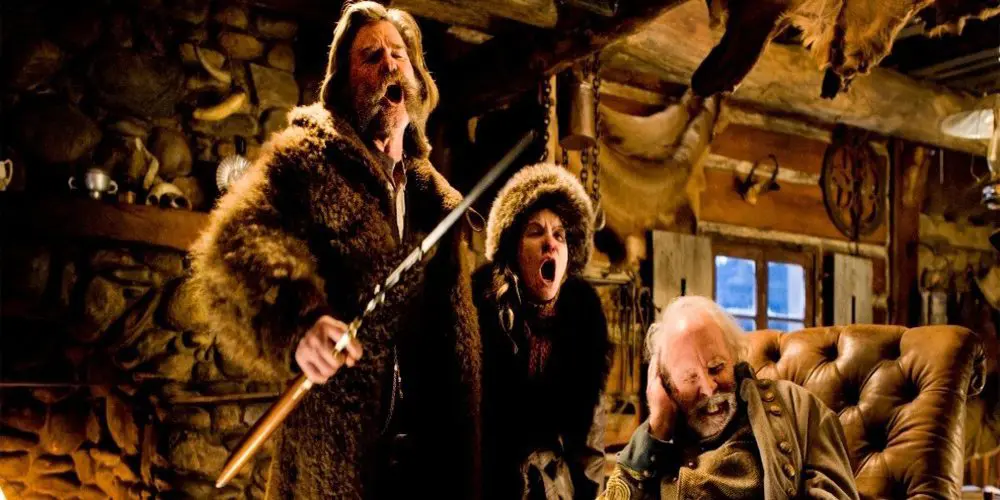
Image from The Hateful Eight (Credit to The Weinstein Company)
Whether or not you agree with Tarantino’s social politics or filmmaking, it’s difficult to suggest that it’s ever not interesting to watch his attempts at redressing real-world cultural ugliness with the beautiful potentiality of movies. He believes, earnestly, I think, that there is a very real intersection between fact and fiction; that make-believe score-settling is, in its way, a salve for the wounds carved into the identities of the oppressed by myriad historical cruelties.
The aforementioned Django Unchained, for all its flaws, offered a righteously indignant vision of African-American empowerment, and every moment of it was deeply felt. Before it, Inglourious Basterds, no less brazenly, sought to avenge the horrors of the Holocaust by tormenting the Nazi war machine with a platoon of Jewish movie stars. Neither are perfect movies, but no such thing exists. What they are, though, indisputably, is art; and at the very least, art can – and, some might argue, should – be this ethically and creatively tricky.
The Hateful Eight, despite its stylistic flourishes (the structure, the 70mm, the Morricone score) feels more of a piece with Tarantino’s earlier work, particularly his first movie, 1992’s Reservoir Dogs, a double- and triple-crossing crime drama set almost entirely in a warehouse. Both pictures share the same pervading sense of hopelessness and gradually-escalating despair.
The Hateful Eight is, undoubtedly, more pleased with itself, and its mean streak runs closer to the surface. But neither movie feels hamstrung by trying to be about what its characters are discussing. Tarantino would have you believe that his latest movie is a commentary on current race-relations in the United States; his proximity to #BlackLivesMatter rallies and his willingness to walk flat-footed through political minefields suggests there may be a vein of truth in that.
But when these conversations come up in the movie they are only superficially interesting; black vs. white, Unionist North vs. Confederate South, justice vs. frontier justice. They are just in-depth enough to round out character motivations and set the stage for violence, which is exactly as in-depth as they need to be.
Another apt comparison with Reservoir Dogs is that The Hateful Eight similarly lacks a point-of-view character or notional authority figure to exert control over the situation or the other characters.
There is room in Minnie’s Haberdashery for everyone, including the actors Tarantino piles on after the intermission. There are parts for Channing Tatum, Zoe Bell, Dana Gourrier and Lee Horsley, and while none feel quite as fleshed-out as those belonging to Jackson, Goggins or Leigh, there’s enough time and space devoted to everyone that eventually the various sections of Minnie’s may as well be different planets. (At one point a character even suggests dividing the room into the Union and the Confederacy, which isn’t too much of a leap to imagine).
The result is a film which feels at once both intimate and oddly broad, taking place in that weird Tarantino halfway house between slapstick and shock, where characters idly kill time with one another before they inevitably start to kill one another. It is, as I said, very much a Tarantino movie.
As stylish and clever as The Hateful Eight is, simply being that kind of movie brings with it a slew of problems. Does a three-hour feature really need an intermission, or, for that matter, to even be three hours long?
Probably not, and especially not one which spends four-fifths of its running time in a single room. It doesn’t quite feel too long, which is impressive in itself, but there’s a sense of Tarantino’s lack of discipline undercutting his ambition, and of the movie getting in the way of itself.
The problem isn’t so much the story as how Tarantino chooses to tell it; The Hateful Eight feels, more so than any of his other features, somewhat incompatible with his style. It’s meaner and more claustrophobic than the rest of his catalogue, its worldview more nihilistic and its characters more irredeemable. Tarantino’s writing still delivers line-by-line pleasure and impact, but within these confines it can feel, at times, oppressive and unwholesome.
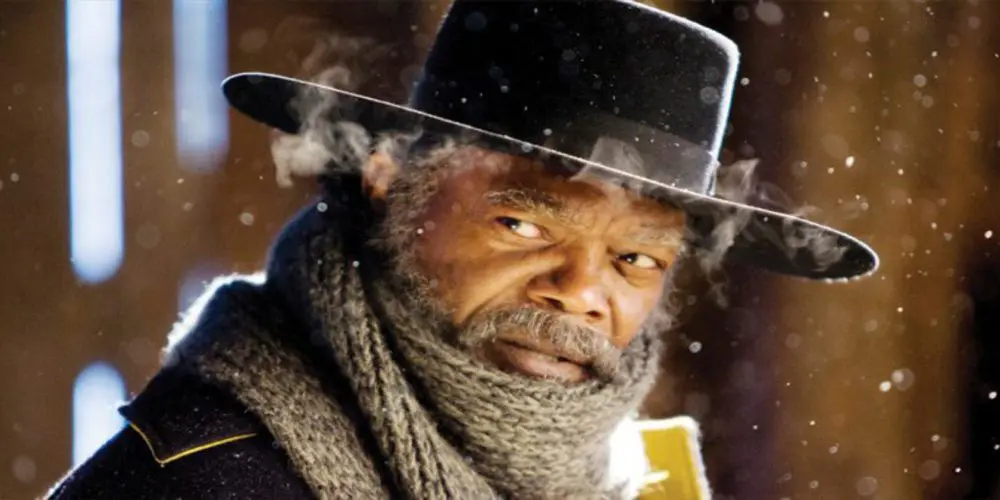
Image from The Hateful Eight (Credit to The Weinstein Company)
Then again, though, and as usual with Mr. Tarantino, this all may well be the point. The violence here, when it arrives, feels less like a shock tactic than a means of quickly and bloodily turning away the ambivalent. For many audiences and critics alike, The Hateful Eight will be too lurid and, indeed, hateful, for their sensibilities.
Many of those critics will not be willing to admit this, for reasons unclear to me. Perhaps most think that to professionally analyse and criticise media one must be willing to engage with its extremes, and if one is not then the extremes themselves must be criticised.
This is, I feel, fundamentally wrong. Everyone has the right to be offended by violence, racism or misogyny in the movies. But being offended does not make you right, and a movie simply depicting violence, racism or misogyny is not a criticism in and of itself.
The Hateful Eight serves generous helpings of all three, but it does so in the service of character and story, which at its heart is about several ugly and cruel people doing ugly and cruel things.
What does The Hateful Eight say about Tarantino and his career?
Early in his career Tarantino was criticised as a pastiche artist. He wore his influences on his sleeve; the Blaxploitation movies of the 1970s, Japanese martial arts, spaghetti westerns, Italian horror. His “thing” back then were darkly-comic crime capers, tricked out with his usual directorial bells and whistles – the aestheticization of violence, the self-assembly story structure, the ensemble casts, the winks and nods to popular culture, and the tendency towards protracted dialogue sequences for which other directors lacked the attention-span.
He was undeniably talented and immediately polarising, but it wasn’t until he started making revisionist revenge movies, letting the oppressed rise up against their oppressors, that he developed a reputation for truly politicizing his work.
Burying social commentary on the modern world in a period piece might seem easy or obvious; it hardly takes a visionary to draw attention to the evil of the Third Reich, or to point out that the Deep South wasn’t particularly amenable to people of colour. Where The Hateful Eight differs is in that ugliness and cruelty; in its anger not at the smears of injustice throughout history, but in how we are not as far removed from them as we like to think.
The movie imagines an unhealed Old West in which the Civil War is still unfinished business, and uses the pliability of genre not for the belated righting of wrongs, but for paralleling the 1870s directly with the 2010s, where in America slavery is abolished but young, unarmed black people continue to senselessly lose their lives at the hands of the institutions which are supposed to protect them.
Tarantino’s solution to this is violence: a bloody trail of pulped heads and entrails strewn and stomped like fat red berries. It’s unpleasant and messy and sometimes, I suppose, its juvenile and ill considered. But it’s also a willingness to cause offense in a culture of offense-takers; its artistic integrity, even when the art is as singular and intelligent as it is problematic and flawed. It’s something. And when it’s so easy to excuse or endorse injustice, to bow your head in compliance rather than risk it being lopped off, maybe something is enough.
More Stories

